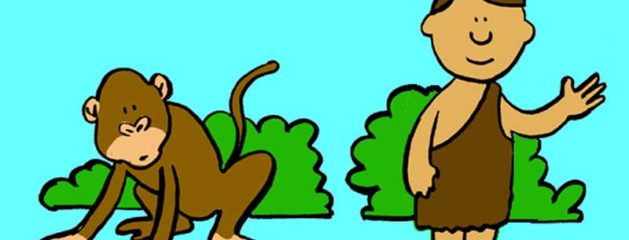“Comparing the mirrors with the lens cylinder system, Land says, “Both are successful and very sophisticated image-forming devices, but I cannot imagine an intermediate form [or common ancestral type] that would work at all.” The kind of design in these eyes, he says, seems impossible to explain as a result of evolutionary relationship. So Land goes on to suggest that the shrimp-like animals with different systems should not be classified as evolutionary relatives,...
Read MoreSimilar Embryos – Evidence of Evolution??
Similarities within embryos of different creatures are evidence of evolution – or are they? Embryos don’t always look similar or follow paths of prior evolution, in fact: “The embryonic development of so-called homologous structures is often different—and not just with respect to limbs. As far back as 1894, the American embryologist Edmund Wilson wrote, “It is a familiar fact that parts which … are undoubtedly homologous, often differ widely … in [their] mode of...
Read More“NEED WATER?”
“Camels have red blood cells that are shaped flat, oval, and much smaller than human red blood cells. Human red blood cells are round. When humans become dehydrated, our blood becomes “sluggish” as the blood cells get stuck; a 5% water loss can result in serious medical problems. For humans, a 12 % water loss can result in death by dehydration; but not so for a camel, with its smaller, flatter, oval-shaped red blood cells. Even as the camel’s water level drops,...
Read More“Where are all the bodies???”
Can you imagine stumbling across 4 billion skeletons? – “Where are all the bodies???” “Evolutionists also claim there was a ‘Stone Age’ of about 100,000 years11 when between one million and 10 million people lived on Earth. Fossil evidence shows that people buried their dead, often with artefacts—cremation was not practised until relatively recent times (in evolutionary thinking). If there were just one million people alive during that time, with an average...
Read MoreFunny Addition to Some Significant Evidence!
Did you hear about the scientific paper (explained here: https://phys.org/news/2018-05-gene-survey-reveals-facets-evolution.html) that showed “that 90 percent of animal life, genetically speaking, is roughly the same age”? How do we correctly interpret that scientific evidence? Notice that that is continually the question that we have to ask – and that shows that everyone is forced to say that their assumptions affect how the data is interpreted. Note the following...
Read MoreJust Evolved Animals??
Are humans different than animals or are we just evolved animals? When I ask people, I have found that a large majority realize that there is more to us as humans than simply an evolved type of ape-like creature. It is clear that we are different based on our conscience, morality, ability to critically think and communicate. It may be slightly possible that those are all evolved traits, but given scientific evidence, we want to come to the reasonable conclusions....
Read MoreIs believing in Design stopping the progress of science…or not?
“Concluding that a body structure is poorly designed, as Oxford University Ph.D. Professor Hafer claims, instead of asking why the existing design exists, is a science stopper. The ‘why’ question motivates research into the reasons for the design. When this approach was applied to the human appendix, the tonsils, the backward retina, and the many putative other examples of supposed poor design, good reasons for the existing designs were found in all cases. The same...
Read MoreYummy…sweat??
“Darwin’s followers believe milk evolved from sweat. But milk is nutritious food containing proteins, fats, and sugars, while sweat is a salty mix of various poisons, including urea. (Now you can see why evolution takes millions of years; it’s all those platypus babies drinking sweat until a series of “miracle mutations” finally turned it into milk!)” Source: Parker, Mary and Gary, The Complete Zoo Adventure¸ Master Books, Green Forest, AR, 2007,...
Read MoreThe Myth Persists!!
“In 2007 Science published an article on the similarity of human and chimp DNA titled, “Relative differences: the myth of 1%”.2 Author Jon Cohen queried the continued use of the 1% figure, citing comparisons following the publication of the draft chimp DNA sequence of around 5% difference. And yet the 1% myth is perpetuated in 2012 in the same journal.” Source: https://creation.com/1-percent-myth See also Tuesday’s post from us where we summarized this...
Read MoreAre Humans and Chimps only 1% Different?

1% was an estimate suggested in 1975 which “came from crude comparisons of very limited stretches of human and chimp DNA that had been pre-selected for similarity.” “The human genome has about 3,000 million ‘letters’. If the 1% figure were correct, this would amount to 30 million letters difference, which would take 10 Bible-sized books to print. This is 50 times as much DNA as the simplest bacterium.3 This is actually a huge difference that far exceeds the ability...
Read MoreOur Favorite Termite!
Termites are famous for eating wood, especially in houses. Yet, termites cannot digest wood. It is the microbes in the gut of the termite that break down the wood that allows it to be digested. The termites cannot exist without the gut microbes, and the gut microbes cannot exist without the termites; both need each other in order to survive. Some scientists say this relationship evolved by accident and chance. Why would termites begin to eat wood if they could not...
Read MoreFavorite Evidences for God & the Bible from Science!
These are some of my favorite arguments from SCIENCE for the Truth of God and the Bible: My Favorite Scientific Evidences for God! This is simply an overview as we could definitely cover a lot...
Read More
